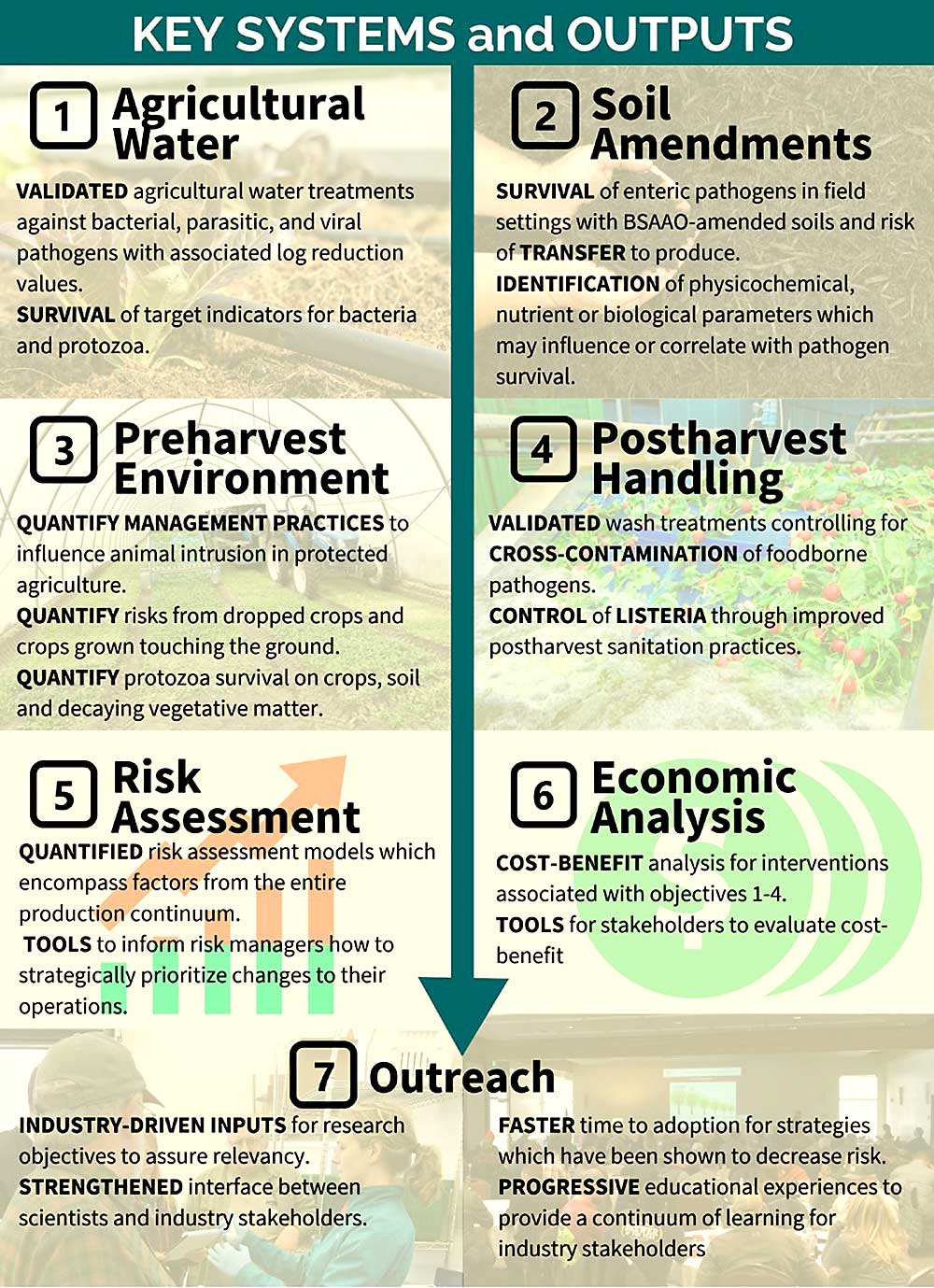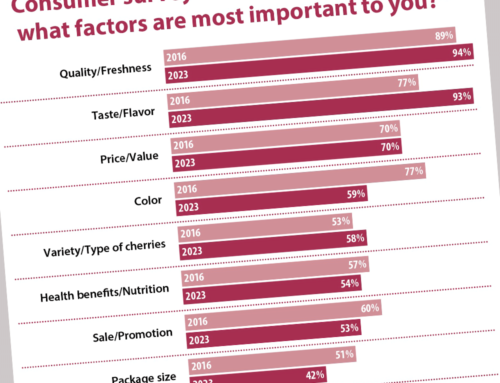Food safety is an important part of any operation, but many growers and packers wrestle with questions connected to how they can best use limited resources to deliver the safest produce possible. A newly funded $7.3 million U.S. Department of Agriculture Specialty Crop Research Initiative project aims to assist producers across the fresh produce industry by providing tools they can use to make educated decisions about managing food safety risks within their operations.
Fresh produce is vulnerable to contamination with microorganisms that can make people sick — resulting in outbreaks and recalls that have devastating economic impacts felt across society due to illnesses and market disruption within the produce industry. Losses ranging from $6 million to $25 million have been incurred in recent produce-related outbreaks, undermining consumer confidence and devastating individual firms.

It is very hard for producers to understand how a multitude of decisions may ultimately play out for the fruits and vegetables that leave their operations destined for homes across the United States. This project will ultimately provide a framework by which operations can assess the impact of their food safety management decisions.
Tackling such a large problem requires a diverse, multifaceted team led by Michelle Danyluk from the University of Florida. She is joined by researchers and extension specialists that span the United States, including: UF colleagues Arie Havelaar, Keith Schneider, Matt Krug, Rafael Muñoz-Carpena, KC Jeong and Naim Montazeri; Barbara Kowalcyk and Robert Scharff from Ohio State University; Don Schaffner, Wes Kline and Meredith Melendez from Rutgers University; Manan Sharma from USDA-Agricultural Research Service; Channah Rock from the University of Arizona; Michele Jay from the University of California, Davis; Kalmia Kniel from the University of Delaware; Laurel Dunn, Govindaraj Dev Kumar and Abhinav Mishra from the University of Georgia; Shirley Micallef and Rohan Tikekar from the University of Maryland; Laura Strawn from Virginia Tech; as well as Troy Peters and me from Washington State University.
“This proposal was specifically developed to respond to a critical national problem that is dramatically affecting specialty crop producers and processors: food safety and implementation of new federal food safety regulations,” said Danyluk, whose own research focuses on food microbiology and safety. “The long-term goal is to provide the industry with tools to effectively manage food safety risks while making the most efficient use of available resources. We also hope to reduce the public health and economic impact of produce-associated outbreaks and recalls using systems-based decision making and cost-effectiveness analysis.”
As a group, we will focus our efforts on seven objectives, as shown in the graphic below, ultimately seeking to fill knowledge gaps on the “control points” for fresh produce production spanning from preharvest agricultural water to postharvest handling. When combined with our current knowledge, these inputs will be used to develop models and case studies to help growers and other stakeholders identify the consequences of different actions that will make a difference to fresh produce safety.

Anticipated outcomes include:
—Reducing produce-related outbreaks, illnesses and food recalls and, hence, increasing consumer and export market confidence.
—Enhancing the financial stability of farmers due to increased confidence in microbial safety of their crops and products.
—Enhancing the economic sustainability of the produce industry in the United States.
—Improving public health outcomes while reducing compliance costs by efficient produce safety management.
—Providing a scientific basis for optimizing the control of microbial food safety threats at the agricultural production level while maintaining the critical role that agricultural lands play in beneficial ecological systems.
—Establishing scientific knowledge and data needed by regulatory agencies during the implementation of produce safety regulations.
The team will create case studies and online models to help growers and others in the supply chain assess the impact of their decisions. The work will include diverse farms and facilities of varying sizes — with consideration of both conventional and organic practices — and crops grown close to and above the soil (including cucurbits, berries and tree fruit in addition to leafy greens and tomatoes) as well as root crops (onions).
The interests of the tree fruit industry will be well-represented through involvement of myself and Peters, as we both engage in research tied to preharvest and postharvest research objectives and outreach. Additionally, members of the tree fruit industry will help with project guidance by serving on the advisory board for the project. It’s also important to recognize the importance of other funding opportunities, such as the Washington Tree Fruit Research Commission and Washington State Department of Agriculture Specialty Crop Block Grant Program, that have ultimately provided the building blocks we will use to further expand our knowledge in this effort.
I’m excited to have the opportunity to contribute to a holistic approach for produce safety. We spend so much of our time looking at individual pieces of the puzzle; this project affords us the opportunity to see more of the full picture. •
—by Faith Critzer
Faith Critzer is the extension specialist for produce safety at Washington State University. She can be reached at faith.critzer@wsu.edu.




Leave A Comment